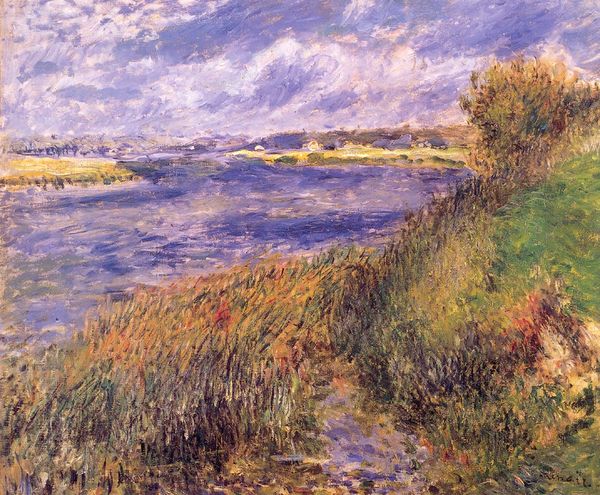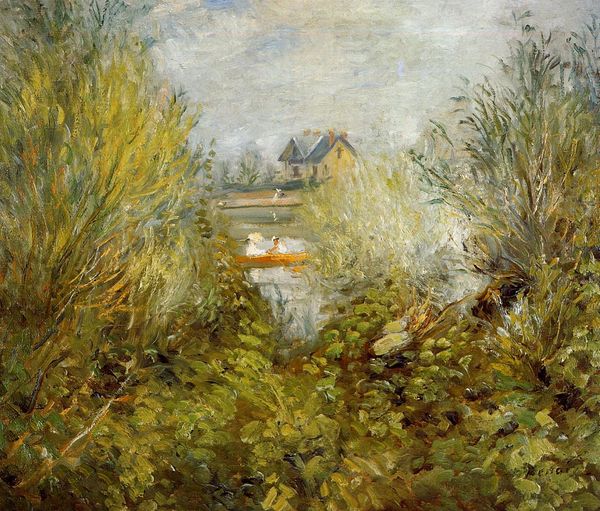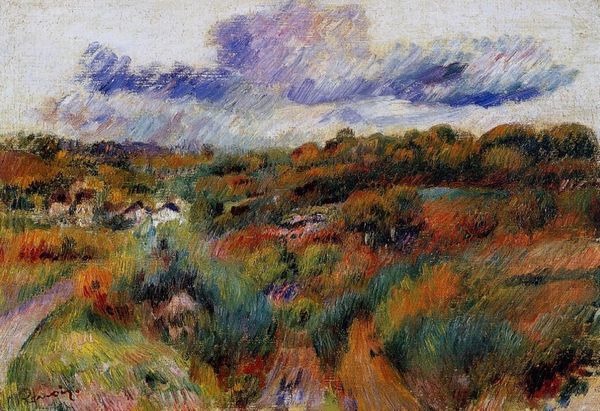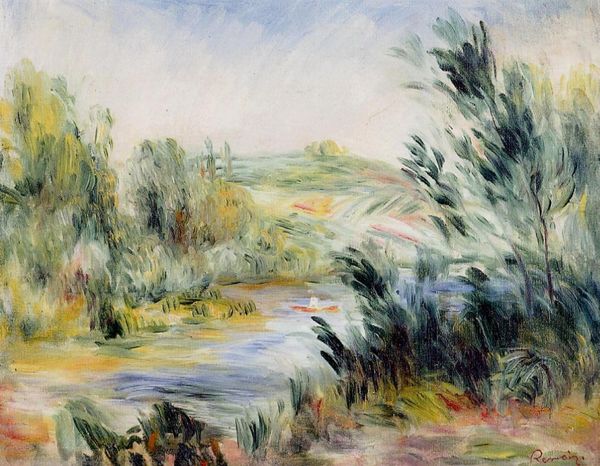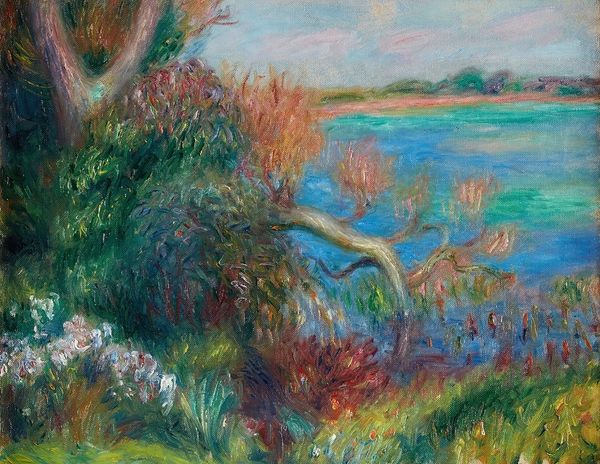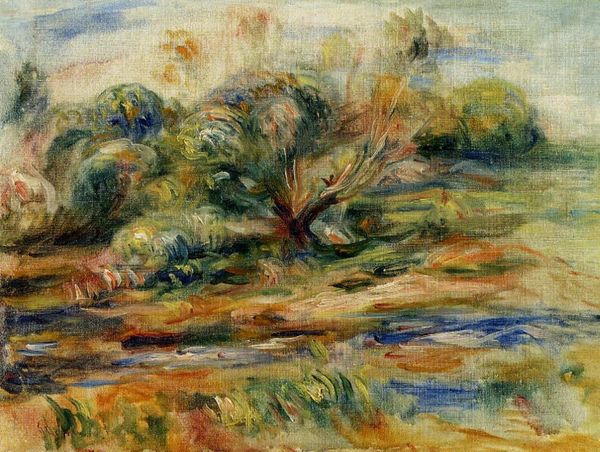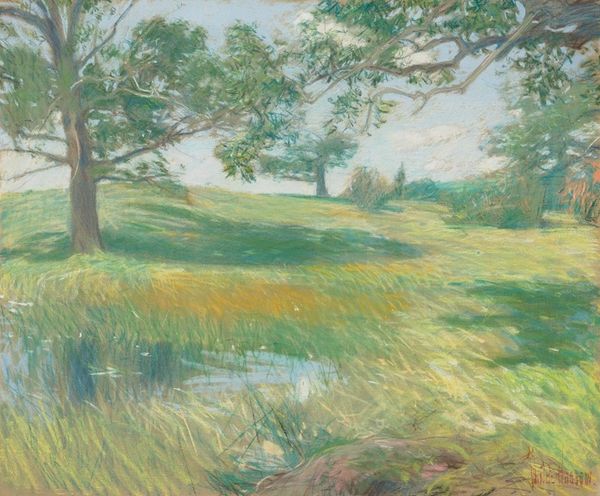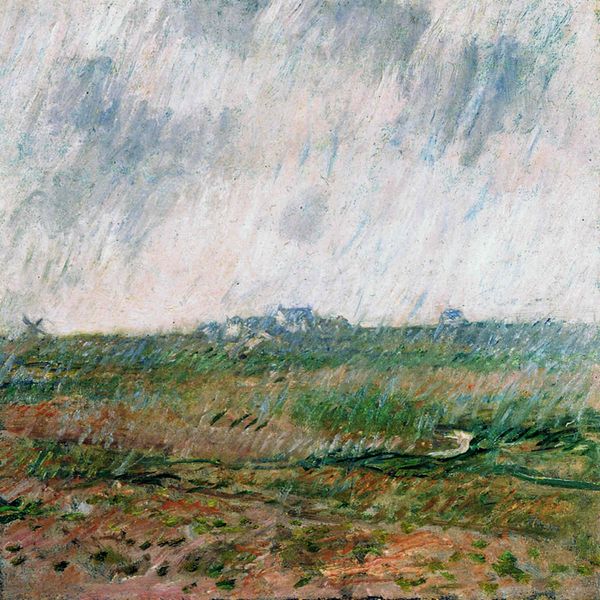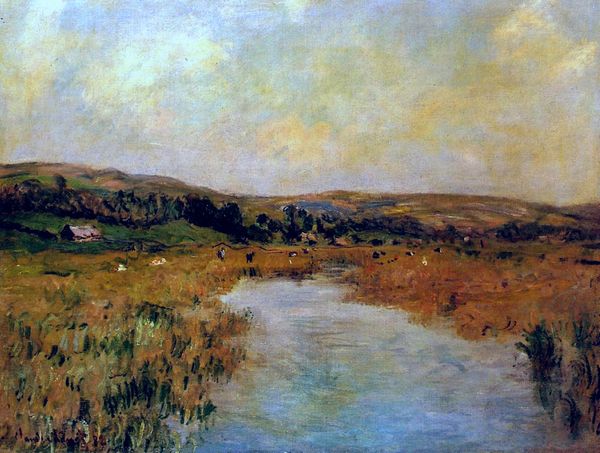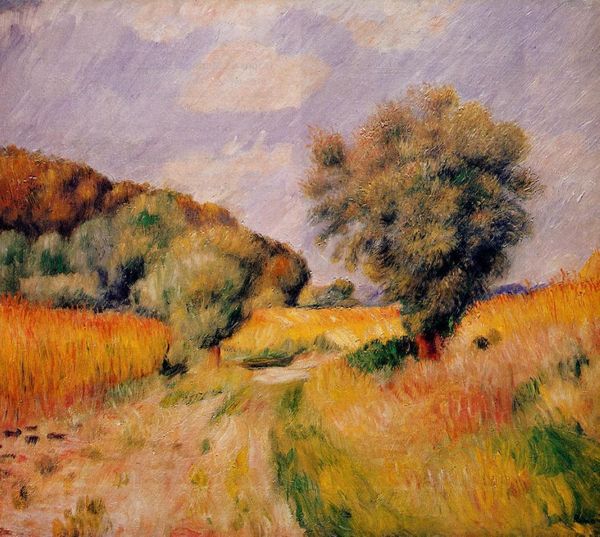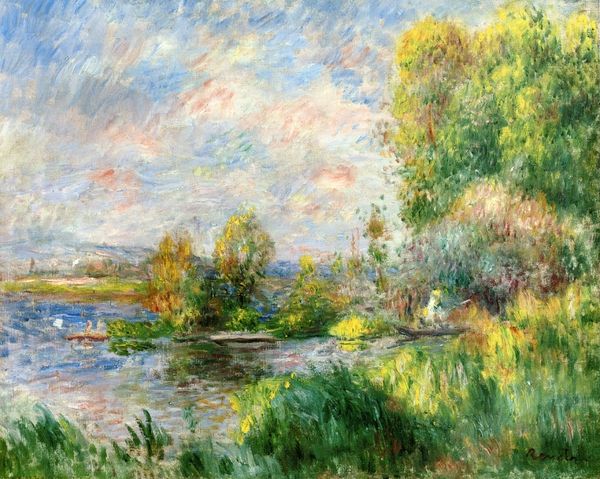
painting, plein-air, oil-paint
#
tree
#
painting
#
impressionism
#
grass
#
plein-air
#
oil-paint
#
landscape
#
impressionist landscape
#
plant
#
seascape
Copyright: Public domain
Editor: This is Pierre-Auguste Renoir’s "Bulrushes on the Banks of the Seine," painted in 1874. It's an oil painting, very characteristic of Impressionism with its focus on landscape and plein-air techniques. There’s a certain stillness in the painting despite all the textured brushstrokes that make up the scene. How do you interpret this work, especially in the context of its time? Curator: Well, let’s think about the social currents running through France in the 1870s. The Franco-Prussian War had just ended, leaving France in a state of social and political upheaval. How do you think that might have influenced the art being produced? This image, with its emphasis on capturing fleeting moments in nature, speaks to the desire for escape, a retreat from the rapidly industrializing urban landscape and the trauma of war. It is more than just landscape; it's a form of social commentary, perhaps? Editor: That's a very interesting point about the socio-political situation. So, the choice of such a serene scene like the Bulrushes wasn’t simply aesthetic but a conscious or subconscious response to turmoil. What does the lack of human figures suggest to you? Curator: Exactly! The absence of people might reflect a deeper anxiety about the changing social order and the individual's place within it. Consider also the burgeoning feminist movement at this time. Perhaps the focus on nature provides an alternative space, away from the male-dominated urban sphere. Renoir, although a man himself, engaged with representing women frequently, but this absence is palpable, a different statement. Do you agree? Editor: Yes, I see what you mean. Focusing solely on nature pushes all figures into the margin. I initially saw a simple, pretty scene but appreciate understanding its broader social context. Curator: Precisely. Seeing it in its time shows us the bulrushes represent something greater, reflecting the anxieties and social reconfigurations of late 19th-century France. Art always reflects our values! Editor: Absolutely! Thank you; that gives me a much richer understanding of Renoir’s work.
Comments
No comments
Be the first to comment and join the conversation on the ultimate creative platform.
